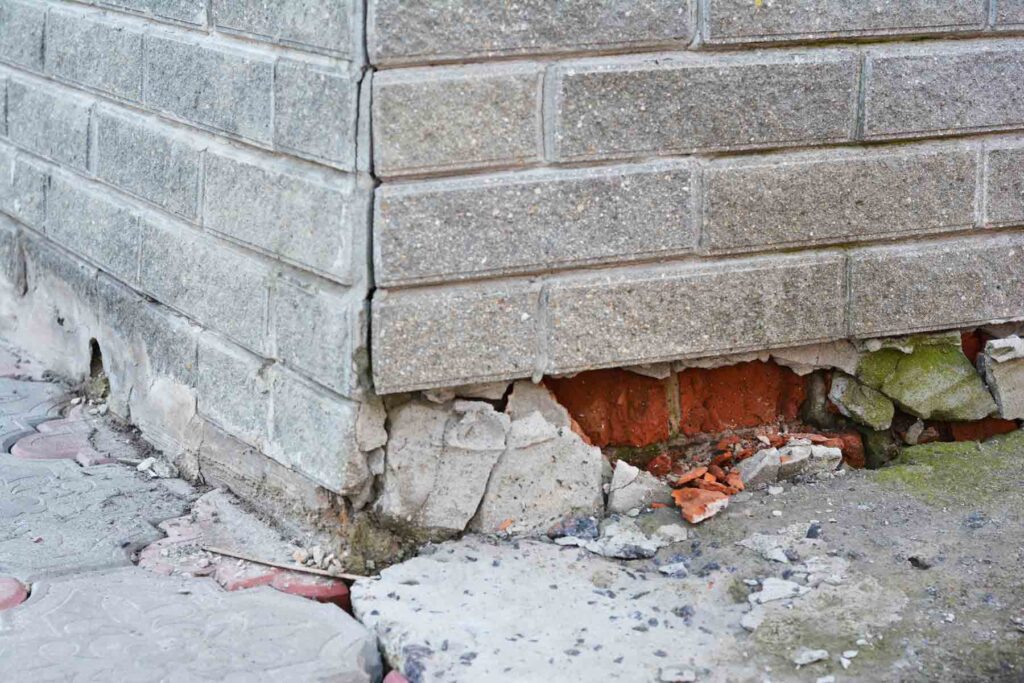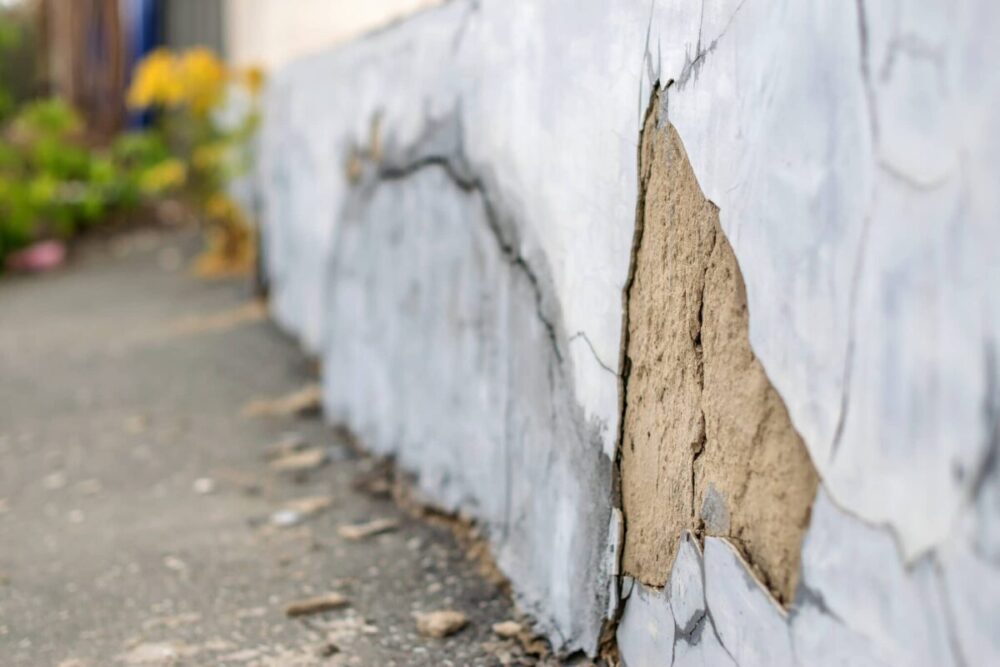For many, the dream of homeownership is where cherished memories are born, dreams are nurtured, and life’s significant moments unfold. However, when foundation cracks creep into this sanctuary, they can trigger a wave of anxiety.
Recognizing that these fractures, although they may appear small, can signal larger problems, is crucial for any homeowner. It is this realization that underscores the importance of identifying and repairing foundation cracks promptly.
By undergoing a thorough structural inspection, one can distinguish between non-structural cracks that are often benign and structural cracks that demand immediate attention. Taking timely action can significantly reduce repair costs and preserve not only the value of the home but also its emotional haven.
As homeowners embrace concrete repair solutions, they take the first step toward safeguarding their sanctuary and ensuring a safe, lasting legacy for future generations.
Key Takeaways
- Understanding the types and causes of foundation cracks is essential.
- Early identification is key to preventing extensive damage.
- A thorough structural inspection can help categorize the severity of cracks.
- Concrete repair solutions range from DIY fixes to hiring professionals.
- Maintaining a dry environment is essential for long-term foundation health.
Understanding Foundation Cracks

Source: sealtitebasement.com
Foundation cracks serve as indicators of potential issues within a structure. Understanding their types and the common causes of foundation cracks can effectively prevent further damage. Cracks not only affect the visual appeal of a property but may compromise the structural integrity if left unaddressed.
Understanding the types and causes of foundation cracks is essential to prevent further damage, and for those looking for professional assistance, foundation crack repair services can provide tailored solutions to ensure long-term stability and peace of mind.
Types of Foundation Cracks
Foundation cracks can be categorized into several types, each with unique implications:
- Hairline ─ Typically harmless and often appear during the concrete curing process.
- Vertical ─ May arise due to settling and often do not signify serious problems.
- Horizontal ─ These can indicate significant issues, particularly related to pressure from surrounding soil.
- Diagonal ─ Often arise from soil shifting, which may require further evaluation.
Common Causes of Foundation Cracks
Recognizing the common causes of foundation cracks is essential for prevention and repair:
| Cause | Description |
| Soil Settlement | Occurs when the supporting soil beneath the foundation compresses or shifts, leading to structural instability. |
| Moisture Fluctuations | Changes in moisture levels can lead to expansion or contraction of the soil, resulting in cracks. |
| Poor Construction Practices | Failure to follow proper construction methods can lead to vulnerabilities and cracks. |
| Groundwater Pressure | Excess moisture buildup can exert pressure on foundation walls, creating significant cracking. |
Identifying and Repairing Foundation Fractures
Recognizing foundation cracks early is crucial to maintaining a safe home. This section explores how to effectively assess crack severity and the various materials and tools suitable for repairs.
Assessing Crack Severity
When assessing crack severity, several factors play a significant role. These include:
- Width ─ Narrow fractures may indicate minor issues, while wider ones often signal serious problems.
- Direction ─ Vertical cracks are typically less concerning than horizontal cracks, which may suggest structural shifts.
- Symptoms ─ Observing signs like moisture intrusion or wall bowing can provide valuable insight into the crack’s severity.
If cracks exceed a certain size or display horizontal expansion, consulting a professional is advisable. Proper assessment lays the groundwork for effective repairs.
Materials and Tools for Repairs
Choosing the right materials is essential for successful foundation crack repair. Some common options include:
| Repair Type | Description | Recommended material |
| Hairline cracks | Minor fractures that need sealing to prevent water intrusion. | Epoxy injection |
| Wider cracks | Fractures that require filling to restore structural integrity. | Hydraulic cement |
| Surface repairs | Repairs to minor surface imperfections, helping to protect the foundation. | Masonry patching compounds |
Preparation is key for successful crack sealing. Cleaning the crack, widening as necessary, and selecting the appropriate materials to enhance the longevity of repairs.
Effective Repair Techniques

Source: homeguide.com
Addressing foundation fractures requires a thoughtful approach, balancing between DIY repair solutions and professional assistance. Understanding what methods are applicable can empower homeowners to effectively maintain their properties.
DIY Repair Solutions
For minor or non-structural cracks, several DIY repair solutions can effectively remediate the situation. Homeowners can utilize the following techniques:
- Epoxy injection ─ This method involves injecting epoxy resin into cracks to bond and seal them, preventing water intrusion and further damage.
- Composite patches ─ These patches can be applied over small cracks to create a protective barrier while restoring the appearance of the foundation.
- Crack filler ─ Available at local hardware stores, crack fillers can be used for surface-level fractures, offering an easy-to-apply solution.
When to Call a Professional
While DIY methods are valuable for smaller issues, certain situations necessitate professional foundation repair. Homeowners should consider consulting experts when:
- Cracks exceed half an inch in width, indicating significant structural concerns.
- Foundation settlement or shifting leads to uneven floors or doors that do not close properly.
- Water accumulation issues arise, necessitating advanced solutions like slab jacking or soil stabilization.
Professional foundation repair specialists possess the expertise to execute complex techniques, ensuring the longevity and safety of the structure. Making the right choice between DIY repairs and hiring professionals can significantly impact the health of the home’s foundation.

Source: conterrafoundation.ca
Conclusion
In summary, identifying and repairing foundation fractures is essential for maintaining not only the structural integrity of a home but also its overall value. Regular inspections are critical, as they allow homeowners to catch and address minor issues before they escalate into more severe problems that require costly repairs. Effectiveness in foundation maintenance lies in a proactive approach to monitoring the condition of one’s property.
Implementing preventive measures can greatly reduce the likelihood of foundation problems. Simple steps such as ensuring proper drainage and controlling moisture levels around the home can make a significant difference. Armed with the right knowledge and tools, homeowners can confidently tackle minor cracks and will know when it’s time to seek professional help.
Ultimately, taking charge of foundation care safeguards a home’s future, allowing it to remain a sturdy sanctuary for years to come. Emphasizing the importance of awareness and action in foundation maintenance empowers individuals to protect one of their most significant investments.





















